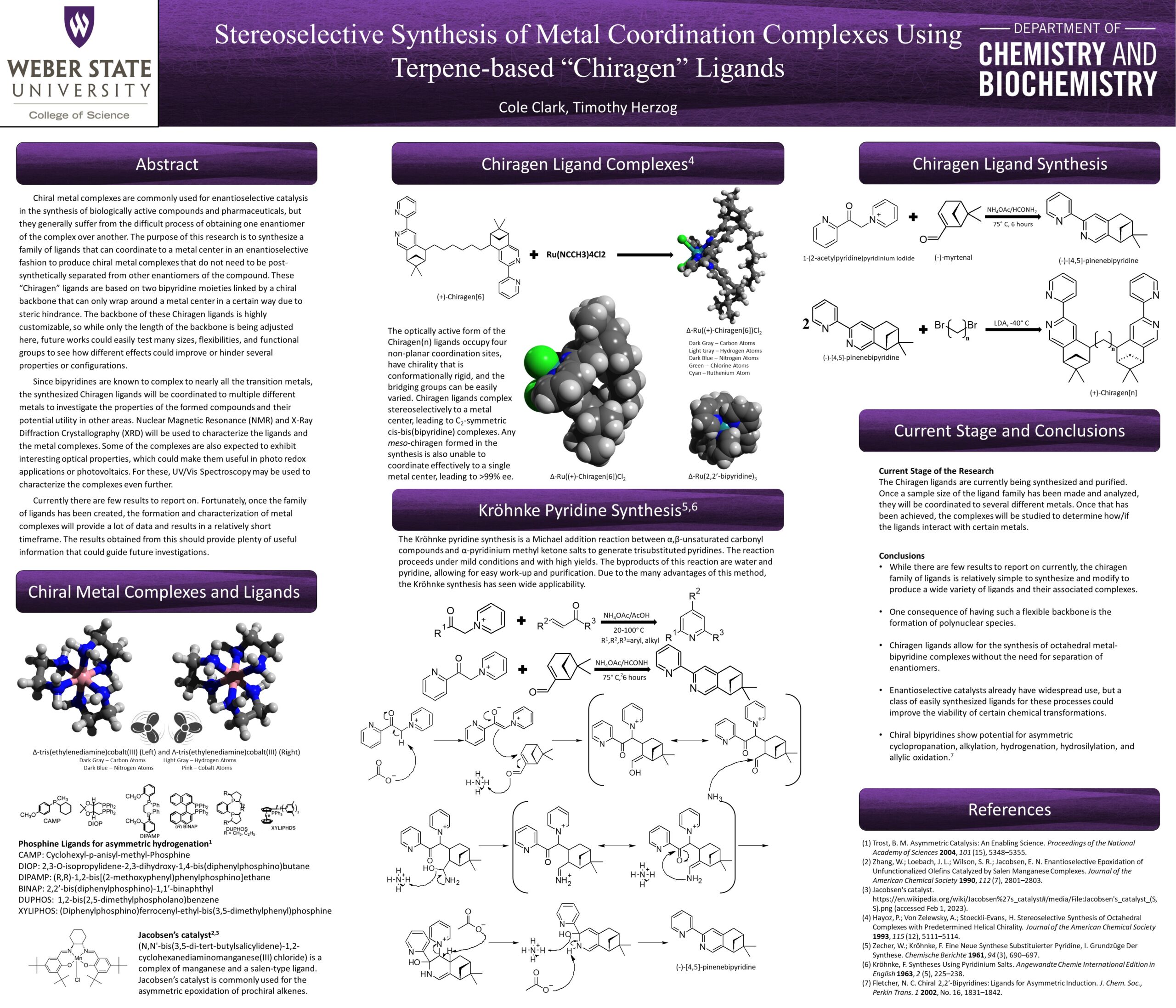Presenter Name: Cole Clark
Description
Chiral metal complexes are commonly used for enantioselective catalysis in the synthesis of biologically active compounds and pharmaceuticals, but they generally suffer from the difficult process of obtaining one enantiomer of the complex over another. The purpose of this research is to synthesize a family of ligands that can coordinate to a metal center in an enantioselective fashion to produce chiral metal complexes that do not need to be post-synthetically separated from other enantiomers of the compound. These "Chiragen" ligands are based on two bipyridine moieties linked by a chiral backbone that can only wrap around a metal center in a certain way due to steric hindrance. The backbone of these Chiragen ligands is highly customizable, so while only the length of the backbone is being adjusted here, future works could easily test many sizes, flexibilities, and functional groups to see how different effects could improve or hinder several properties or configurations.
Since bipyridines are known to complex to nearly all of the transition metals, the synthesized Chiragen ligands will be coordinated to multiple different metals to investigate the properties of the formed compounds and their potential utility in other areas. Nuclear Magnetic Resonance (NMR) and X-Ray Diffraction Crystallography (XRD) will be used to characterize the ligands and the metal complexes. Some of the complexes are also expected to exhibit interesting optical properties, which could make them useful in photo redox applications or photovoltaics. For these, UV/Vis Spectroscopy may be used to characterize the complexes even further.
Currently there are few results to report on. Fortunately, once the family of ligands has been created, the formation and characterization of metal complexes will provide a lot of data and results in a relatively short timeframe. The results obtained from this should provide plenty of useful information that could guide future investigations.
Since bipyridines are known to complex to nearly all of the transition metals, the synthesized Chiragen ligands will be coordinated to multiple different metals to investigate the properties of the formed compounds and their potential utility in other areas. Nuclear Magnetic Resonance (NMR) and X-Ray Diffraction Crystallography (XRD) will be used to characterize the ligands and the metal complexes. Some of the complexes are also expected to exhibit interesting optical properties, which could make them useful in photo redox applications or photovoltaics. For these, UV/Vis Spectroscopy may be used to characterize the complexes even further.
Currently there are few results to report on. Fortunately, once the family of ligands has been created, the formation and characterization of metal complexes will provide a lot of data and results in a relatively short timeframe. The results obtained from this should provide plenty of useful information that could guide future investigations.
University / Institution: Weber State University
Type: Poster
Format: In Person
Presentation #B54
SESSION B (10:45AM-12:15PM)
Area of Research: Science & Technology
Email: coleclark1@mail.weber.edu
Faculty Mentor: Timothy Herzog

